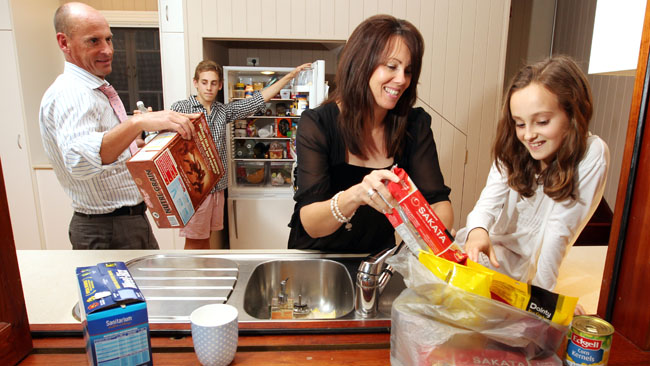Leave a Comment:
(0) comments
Add Your Reply


Want more financial security and better control of your family’s finances? Here’s a look at what you could do to prioritise and plan to make your hard-earned money go the distance.
Are you in charge of your family’s finances? Or do you share the responsibility with your partner? Either way, you may well be aware what a balancing act it can be. Sometimes, it can be a challenge to match your income (whether as a single-earner or a dual-income family) to the needs and goals of your family, but it’s certainly achievable with some careful planning.
Here are some ideas that may help take the stress out of managing your family’s money matters and set you on the path to achieving your collective goals.
Steps to financial control
One of the main reasons you may be stressing about your family’s finances is uncertainty about being able to meet your obligations. By knowing how much money is coming in and going out, you can plan to meet your expenses and allocate money for saving.
So, track your family’s spending to get a better perspective to where your money is going – you can download a free mobile phone app or record purchases in a notebook if it helps.
By looking at all your bills and credit card statements in detail, you’ll see your big purchases and be able to plan for future expenses, such as birthday presents and school trips.
A budget can reveal if, as a family and as individuals, you’re spending more than you can afford. Budgeting is not about making cutbacks, it’s about choosing and knowing where your money goes.
It can support your family’s financial goals, such as saving to buy a house, paying down debt, planning for a child’s education or preparing for a family holiday. It can also bring in some discipline to curb any accidental overspending – you can be guided by the limits set up in the budget.
The Australian Securities and Investments Commission provides a free online money planner at moneysmart.gov.au. It gives a detailed overview of each area of family spending and maps out a plan for weekly, monthly, quarterly and annual expenses.
With a budget drawn up, you can allocate your income, meet your expenses, gradually pay off any debt and save a little too. You may find that one of the positive side effects of understanding how much you’re spending is that you naturally aim to save more.
If you share your family’s financial responsibilities with a partner, it’s important to make sure that both of you are on the same page about what strategies you put in place to manage your family’s finances.
Tips to minimise expenses
Saving money on everyday expenses can make a big difference to the money you have left for the things you really need – and if every member of your family can contribute, it can add up, and in the long run may lead to more savings too. Try minimising the costs of:
Are you in charge of your family’s grocery shopping? After deciding how much to spend on groceries, take your money and a list of items with you, and most importantly, stick to your list. If you don’t take extra cash or cards, you’ll only be able to spend what you have.
Try having quick showers, washing clothes in cold water and turning off electrical appliances at the power points. These changes make a big difference to the size of electricity and water bills.
With fashion changing every season, buying clothes can be costly, especially if you are part of a big family. Save on clothes by making sure you can wash any new items yourself to avoid dry cleaning charges. And, if you make sure a new item goes with at least two others in your wardrobe, you may end up with three new outfits instead of one.
Walk or use public transport if you can (and drive only if you must) to save money on fuel. If you own a six-cylinder fuel guzzler, downsize to a more fuel-efficient car. You can also run several errands in one car trip. Plus, if you have two cars in your family, see if you can manage with one, as this will cut down on maintenance and repair costs.
Small changes to the things you buy every day can make a big difference. For example, if you buy three cups of coffee each day, try having one instead – the savings over one year could add up to more than $1,000. Give your children home-made lunches, rather than giving them the money to buy.
We can review your family’s financial situation in detail, and help you make the most of your income and achieve your goals sooner. So, please call us today.